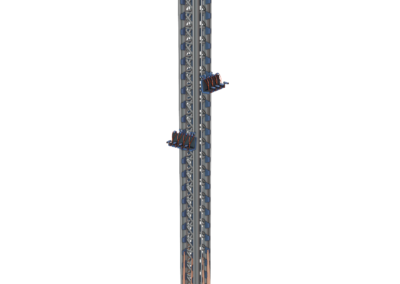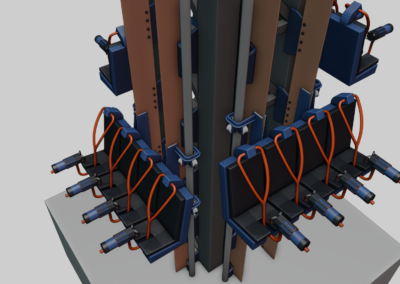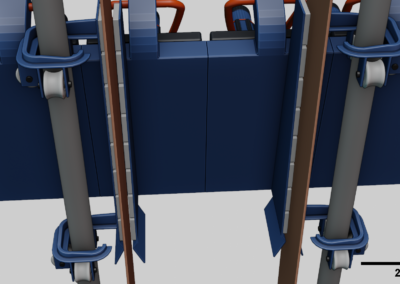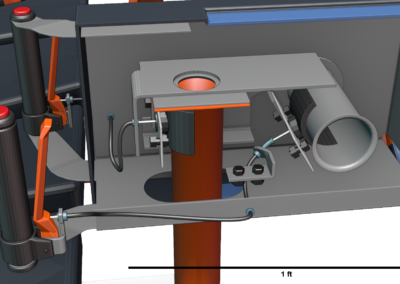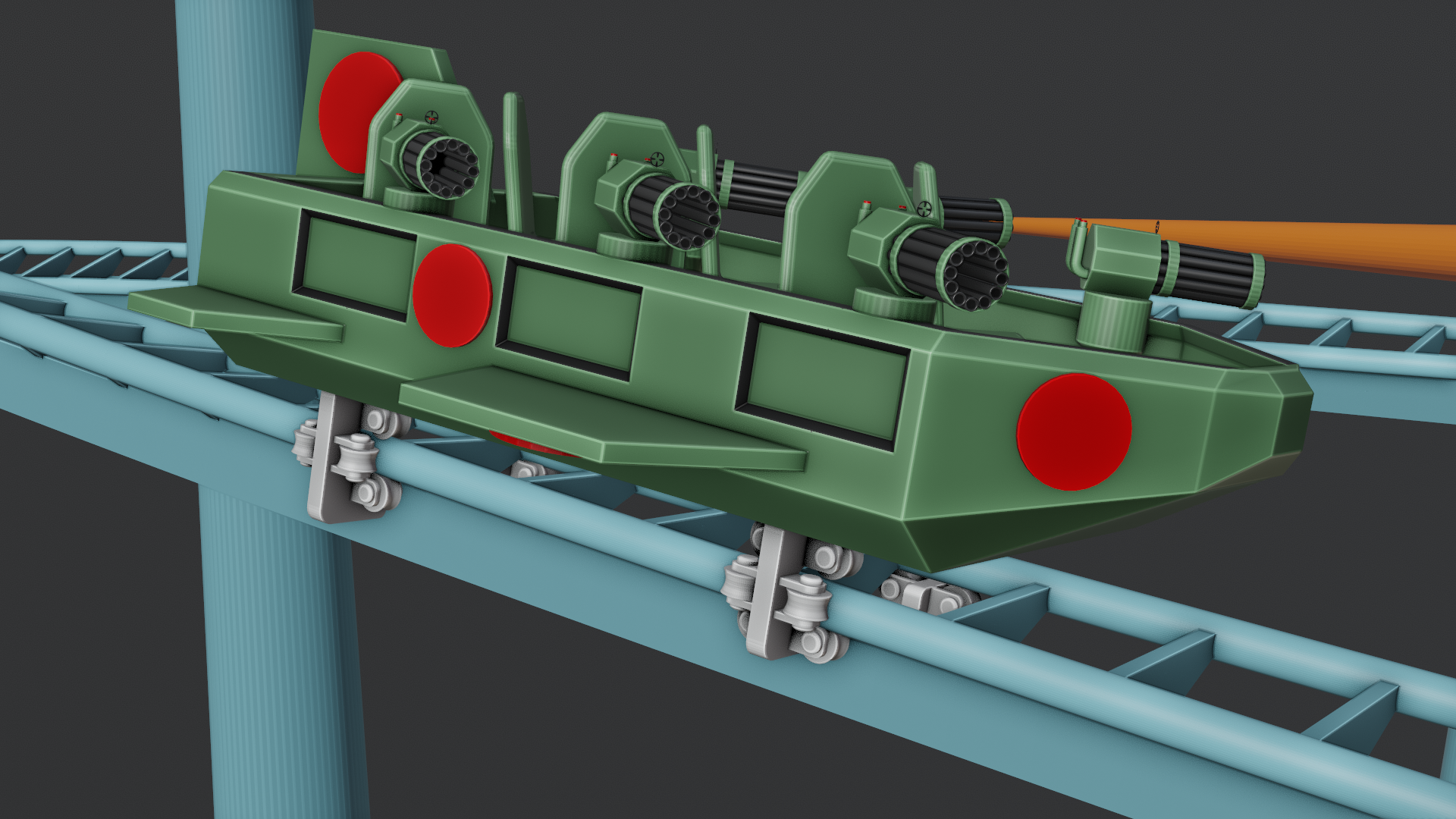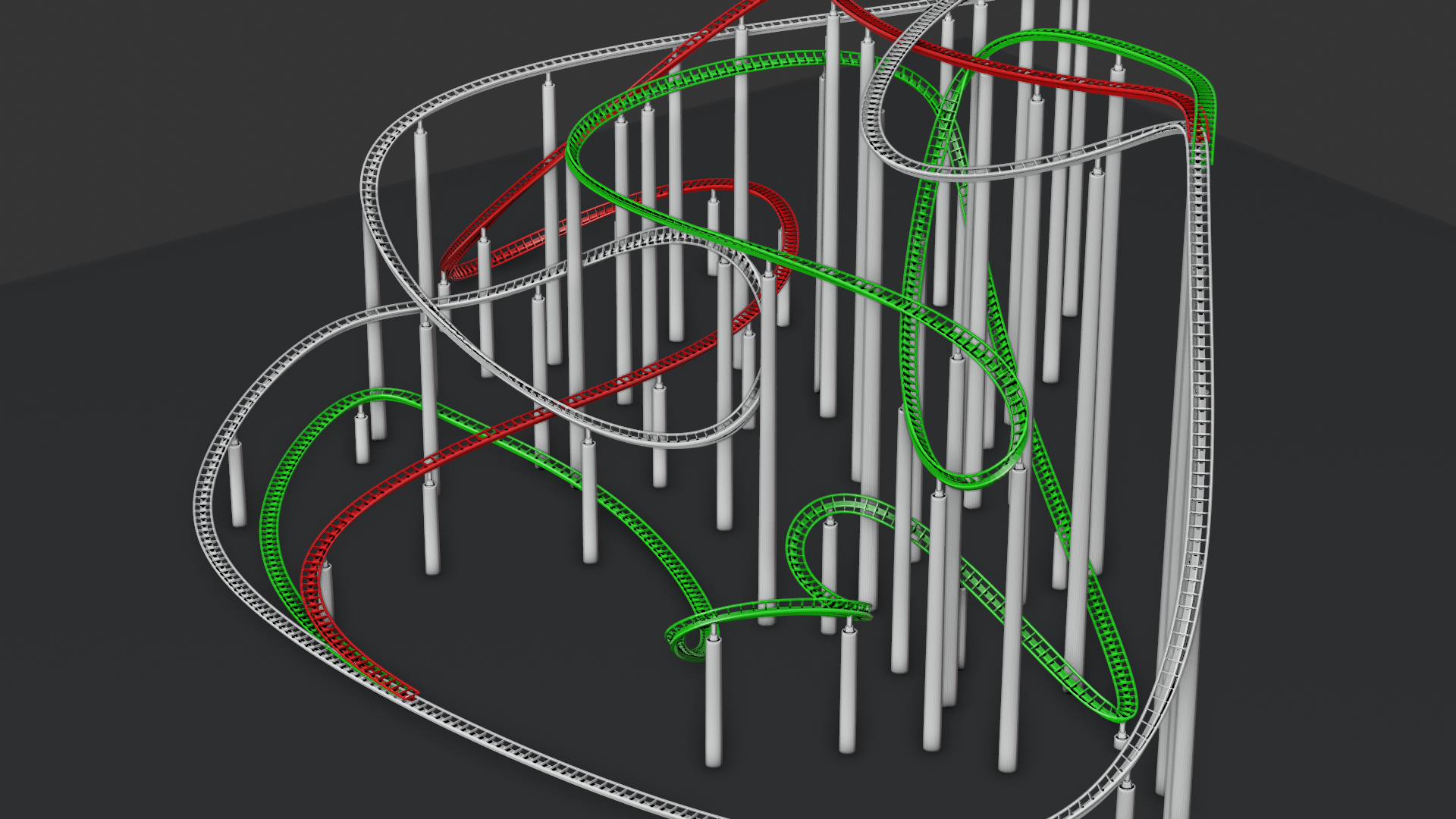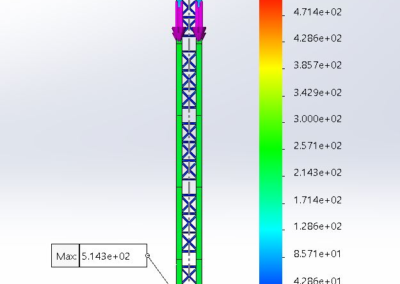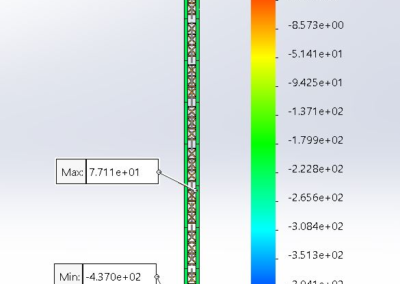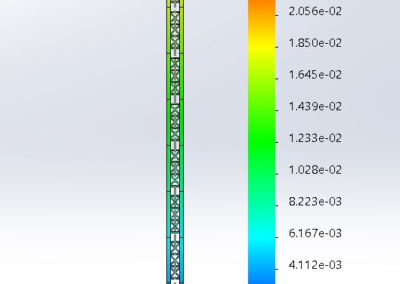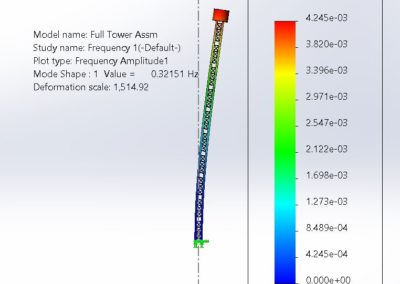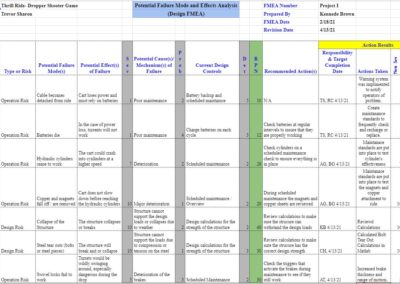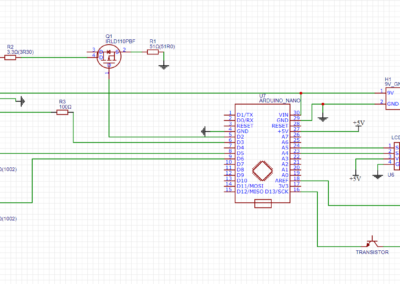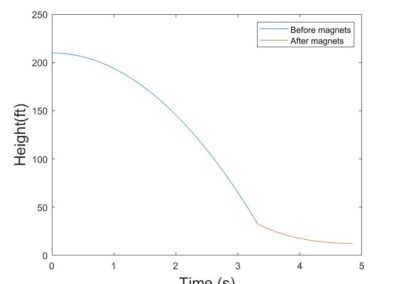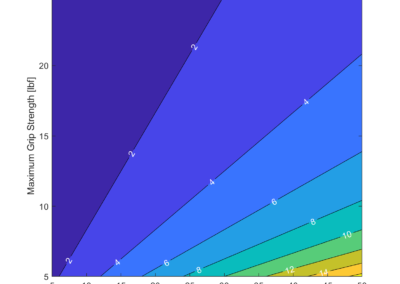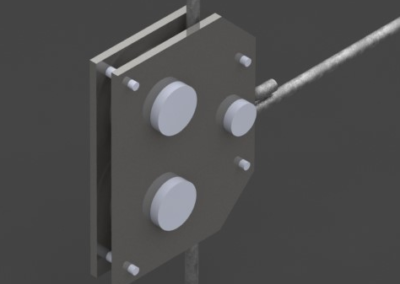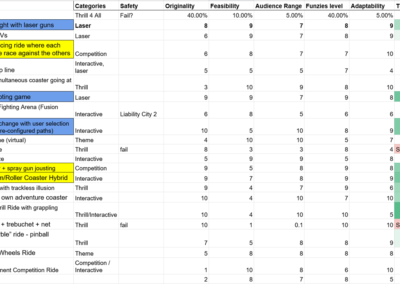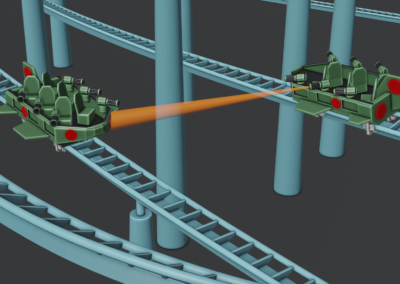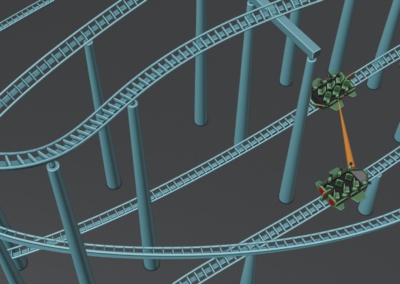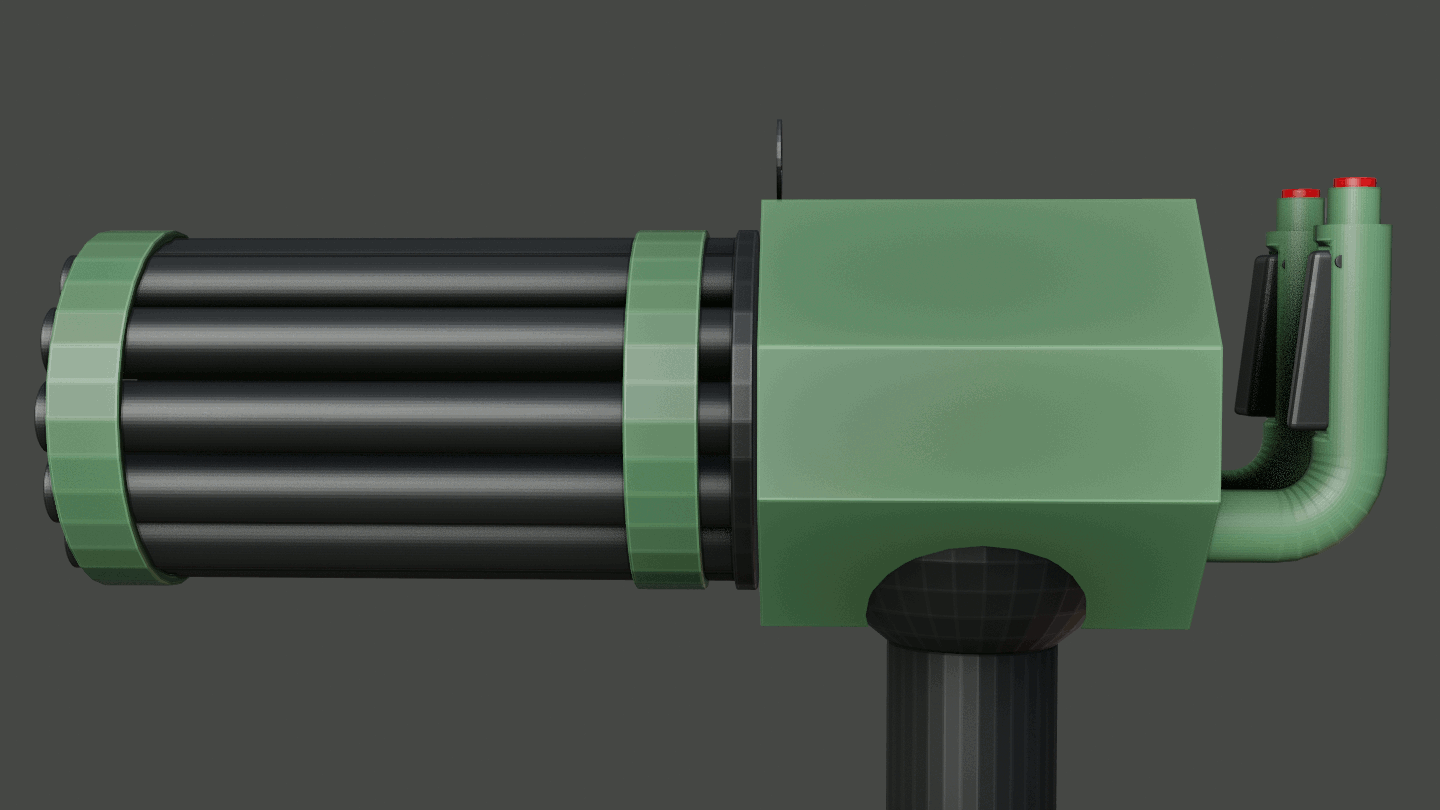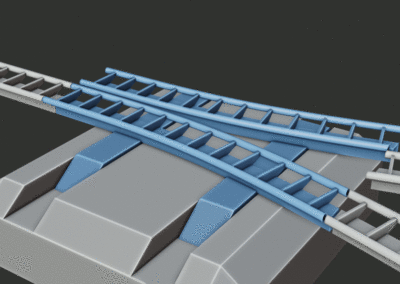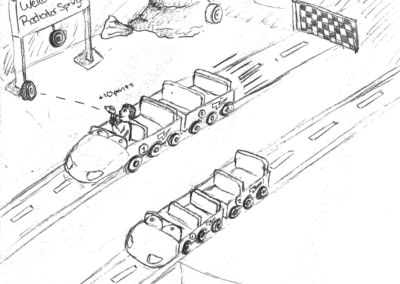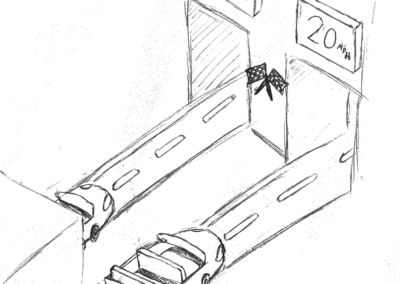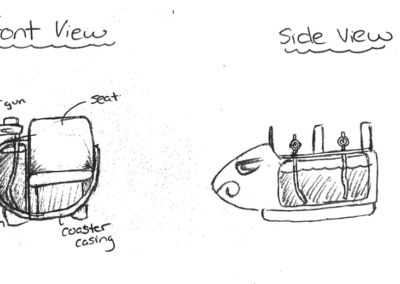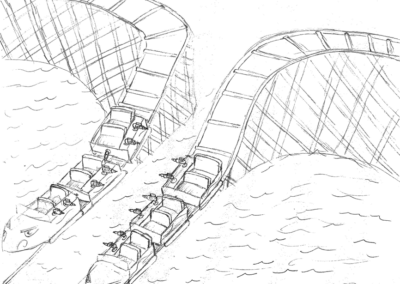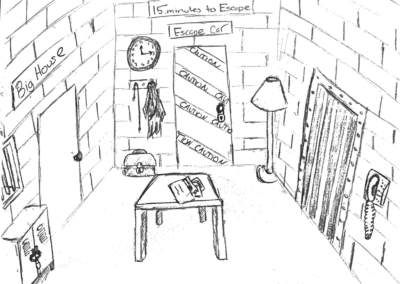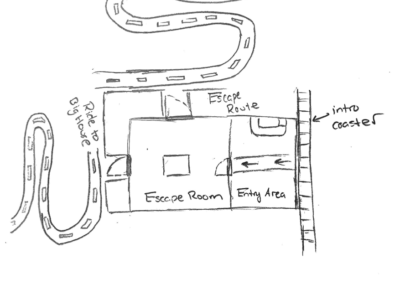Blaster Rodeo Industries – Amusement Park Thrill Ride Design Team #1
Overview
Blaster Rodeo Industries has designed a unique and innovative thrill ride to incorporate aspects of excitement while analyzing the structural and mechanical requirements necessary for safety. Our team wanted to focus on the rider experience by combining psychological elements of fear with a competitive aspect to give them the ultimate thrill ride experience. After a series of brainstorming sessions, we decided to go with a twist on the classic dropper tower ride. We added turrets to each cart and a series of targets for them to shoot at while ascending. Riders will shoot at targets along the way scoring as many points as they can for their cart’s team. If they lose, they will experience the frightening fall sooner than the rest of the riders. Safety was of utmost importance and needed in depth analysis of critical components. Each component involved complex connection with one another and utilized risk assessment and industry safety guidelines to assure safety as a priority.
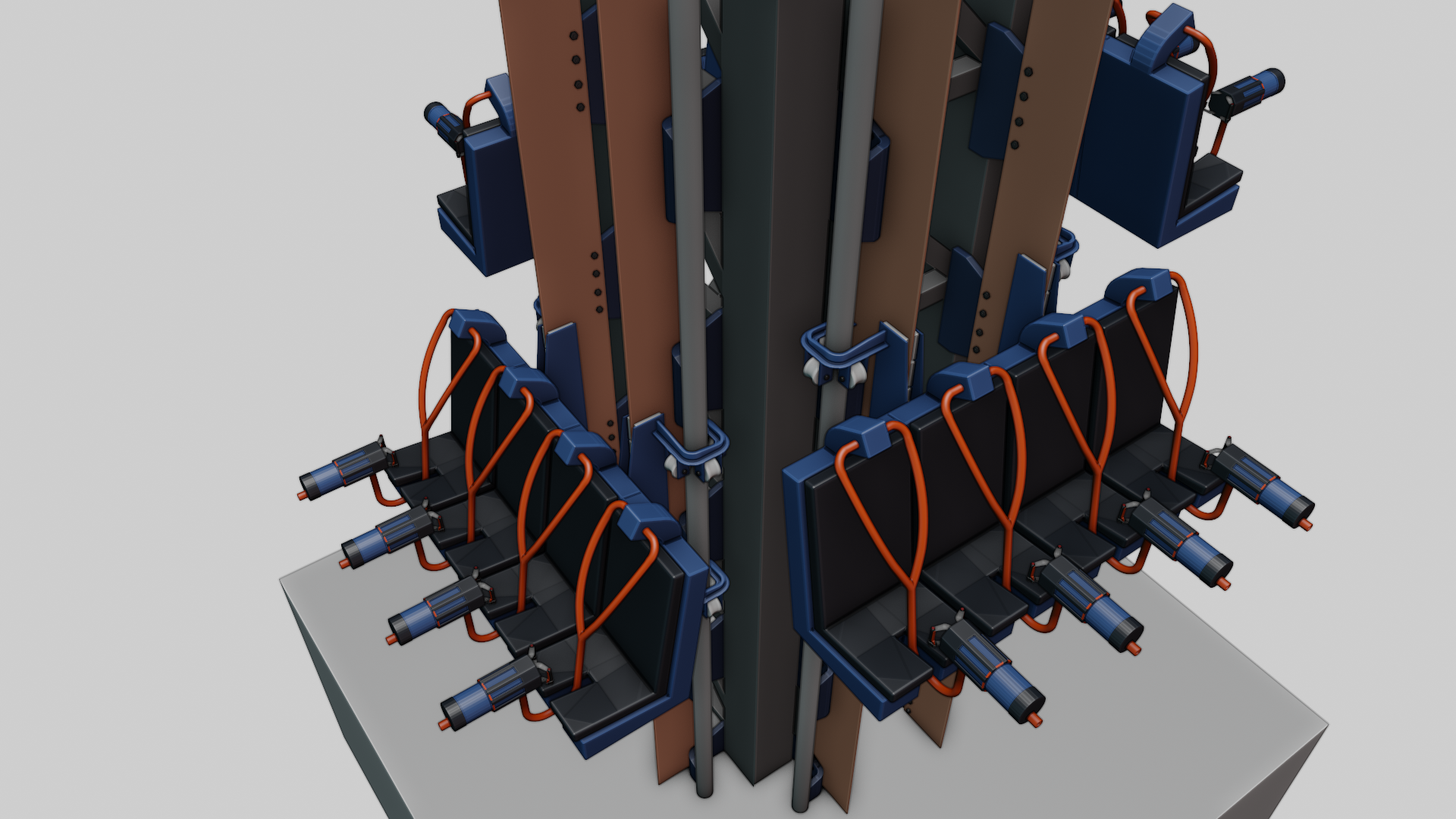
Live Zoom Chat
ID: 916 6780 3510
Password: 001765
Team Members
- April Garlin
- Azariah Thompson
- Brock Girling
- Christian Hildebrandt
- Jonas Agudo
- Kennede Brown
- Robert Clayton
- Trevor Sharon
The Client
- John Persichetti
Acknowledgements
Project Advisors: Prof. David Grimm, Sue Anderson
Technical Advisors: Dr. Andrew Petruska, Dr. Shilling Pei, Dr. Joe Crocker
Website Technology: Mr. Mark Ramirez, Matthew LaRue
Elevator Pitch
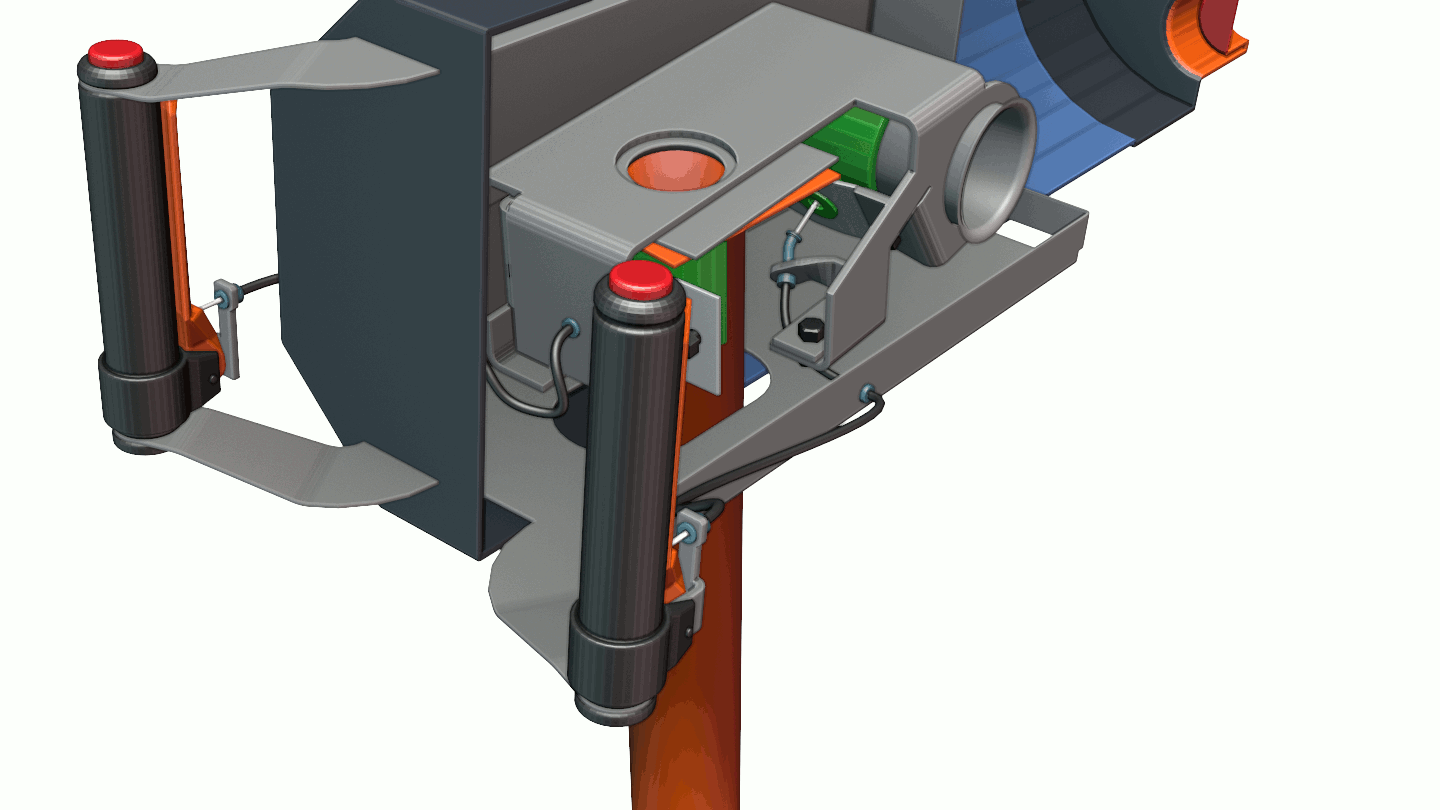
The Dropper Shooter Game is Blaster Rodeo Industries’ answer to the growing need for new and exciting rides in the amusement park industry. The ride incorporates all of the best features of a standard drop tower, while adding a competitive aspect. It will have four carts of four people going up the four sides of the tower. Each patron of the ride will have access to a laser tag turret that is mounted on the front of his or her seat. This turret will be aimed at the walls of the building which will contain targets of various point values. Each cart is trying to earn the most points by shooting these targets. At the end, the carts are dropped in order of lowest to highest score. This adds an element of competition and excitement on the way up, culminating in the suspense of who will drop first.
Initial design approach brainstorming sessions along with other forms of research to determine what ride design appealed to the most people. Images to the right show the semifinalist concepts. The top image shows the “WW2 Laser Dogfight Coaster” concept and the bottom shows the “Choose Your Own Adventure Coaster” concept. Check the gallery below for more concept sketches and renders. Once metrics of safety, feasibility and enjoyment potential were considered in a design matrix, semifinalist concepts were selected. Through interactions with the client and surveys to the public, the dropper shooter ride became the clear winner. To take the dropper shooter ride into the design stage, sub-teams were formed to design several key subsystems including: structural, power, braking and turret design. The solutions for each subsystem were open-ended and required many options to be weighed. In particular, the braking system had two strong contenders: eddy current magnetic braking and a winch-based systems, like those used in elevators. It was decided that a magnetic braking system was not only safer, but also in line with common industry practices for modern dropper towers. To deliver power, a solution was chosen that mimicked light rail power delivery systems. Rollers encapsulate a positive wire while the guiding rails for the carts provide a ground connection. To allow for flexibility in shooting game modes, the carts needed to be dropped independently. A square truss structure was designed to allow a cart on each side with independent guide rails. Structural calculations and FEA analysis were conducted on this design. To avoid injury to users, the laser turrets were designed to remain locked in place with a braking system unless the handles are firmly gripped. Given the emphasis on concept exploration and the scale of any proposed design, the client desired a clear presentation of the concept instead of any prototyping. This allowed for the team to focus on creative ideas, safety considerations and graphical communication.
Design Solution
Next Steps
Next steps for this concept will heavily rely on designing a building to house the dropper tower. Seismic calculations of the tower in this project relied on an external building to provide dampening at the tower’s top. Integrating the two structurally will be critical for taking this concept further towards reality. Designing pedestrian access and incorporation of the line into a design for the theme will be important to ensuring a good user experience. Profitability will also depend on these factor for rider throughput and side attractions. It is also recommended to design a way to move the laser targets on a semi-regular basis to keep the shooting games fresh. Adding or improving game modes for the ride should be considered at all stages of the design, construction phase and ownership phases in the lifecycle of the ride. The dropper shooter ride was chosen in large part for its ability to be updated with new games and fresh experiences.
Meet the Team
April Garlin
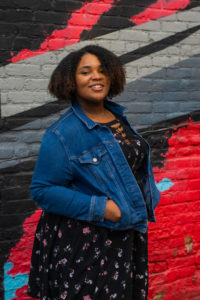
April was a valuable member of the team and created early drawings of ride ideas as well as helping on the brake system. She is a Colorado native and an avid thrill ride enthusiast. In her free time she enjoys reading, watching movies, and going on adventures with her friends. April will graduate with a degree in Mechanical Engineering and a Minor in Metallurgical and Materials Engineering.
Azariah Thompson

Azariah Thompson is the team’s Technical Design Lead. Azariah’s specialty is graphical design, and he handled the team’s concept designs, as well as the website. Azariah was also a member of the Turret Design team. In Azariah’s free time, he enjoys spending time outdoors, machining, and reading. Azariah will return to The Colorado School of Mines in the fall to pursue a Masters of Science degree in Mechanical Engineering with an emphasis in Thermal Fluid Systems.
Brock Girling

Brock was an excellent team member who worked was on the Brake System Team. Brock is a sports enthusiast who grew up in Colorado and loves the great outdoors. In his free time, Brock enjoys solving puzzles especially the Rubik’s Cube. He also enjoys listening to music. Brock will be graduating this spring with a degree in Mechanical Engineering.
Christian Hildebrandt
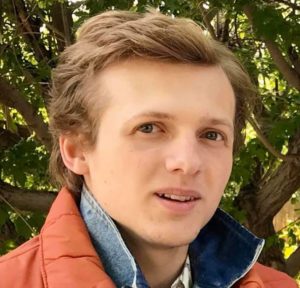
Christian helped the team by creating SolidWorks models of the tower structure and running varied stress analysis simulations while performing other stress mode and safety factor calculations. He is a mechanical engineer and Colorado native who enjoys hiking and hockey.
Jonas Agudo

Jonas contributed to the team as a member of the turret design team. His favorite part of the project was the idea generation phase. An interesting fact about Jonas is that while he enjoys designing thrill rides along with his team, he doesn’t actually like to go on them. Jonas will be graduating this spring with a degree in Mechanical Engineering.
Kenede Brown
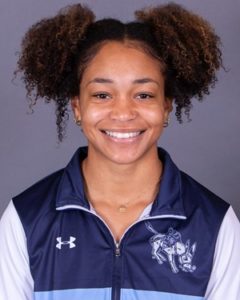
Kennede contributed to the team by working on the tower design and its civil engineering aspects. This included seismic and gravity calculations for the thrill ride. Kennede is a Colorado native who is also a part of the Women’s Varsity Track and Field team here at Mines. She will graduate this Spring with a degree in Civil Engineering, and then will pursue a Master’s degree next fall with an emphasis in Structural Engineering.
Robert Clayton

Robert held the role of communications lead for this project. This required Robert to organize many of the logistical needs for the team. Robert is also on the Varsity Swim Team where he was the sole member of the Men’s Team to make it to Division II NCAA Nations this year. He also holds 4 team records and was awarded RMAC swimmer of the year. In the Fall, Robert will pursue his Master of Science in Mechanical Engineering with an emphasis in Thermal Fluid Systems at the Colorado School of Mines.
Trevor Sharon

As the Team Lead Trevor was essential to the success of the group. In this position he moderated meetings, made decisions, and managed the teams overall schedule, all while doing just as much of the day to day work as the rest of the team. As a member of the Power Subsystem Team, he dealt with the electrical side of the project. Trevor is graduating with a masters in Mechanical Engineering with an emphasis in Robotics and Automation. In his free time, Trevor enjoys being outdoors and spending time with friends and family. After graduation, Trevor will be working as a control systems engineer at DMC.
